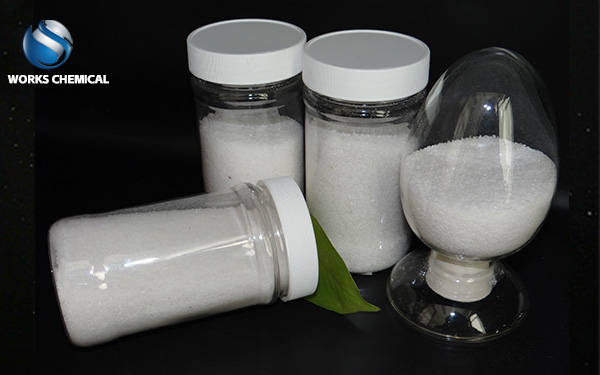
In response to the problems of high moisture content in the sludge cake and low sludge pressing efficiency in the treatment of papermaking sludge, the sludge enhancer can significantly reduce the moisture content of the sludge cake to 40%-60% through a multi-target action mechanism, achieving a drier sludge pressing effect. The following are the specific solutions:

I. The Core Mechanism of Action of Sludge enhancers
Electro-neutralization and flocculation effects
Papermaking sludge contains a large amount of anionic fibers. The cationic components in the sludge enhancer combine with the fibers through electro-neutralization reactions to form flocs, promoting the separation of sludge and water.
Surface modification and water release
The surface structure modifier in the sludge enhancer can reduce the solid surface load and specific surface area of the sludge, decrease the hydrophilic groups (such as polysaccharides and proteins in EPS), and make the sludge surface more likely to release water.
Effect: The viscosity of the sludge is reduced, its fluidity is improved, and it is easier to remove water in the filter press.
Fiber recycling and resource utilization
For the 50% fine fibers in papermaking sludge, sludge enhancers can increase their retention rate and achieve resource utilization (such as in the production of recycled paper).
Case: After a certain paper mill used a sludge enhancer, the amount of dry sludge per ton of recycled paper exceeded 150 kilograms, and the fiber recovery rate was significantly improved.
Ii. Product Recommendations and Usage Effects
Moisture content reduction: It can be reduced from 80% to 40%-60%.
Efficiency improvement: The filtration efficiency is increased by 100% to 500%, and the sludge pressing cycle is shortened.
The quality of the mud cake: No "runny core" phenomenon, uniform dryness both inside and out, and natural shedding.
Applicable scenarios: Specifically designed for papermaking sludge, it is suitable for plate and frame filter presses.
Effect:
Advantages: Small dosage (4 kilograms per ton of absolute dry sludge), no need to add lime, and non-corrosive.
High molecular weight cationic flocculant
Features: Enhanced flocculation effect through high grafting rate complexes, suitable for papermaking sludge with complex components.
Effect: The flocs are large and dense, and the dehydration efficiency is high.
Iii. Cost-benefit Analysis
Pharmaceutical cost
The dosage of traditional chemicals (such as PAC and PAM) often exceeds 200 kilograms per ton, while the sludge enhancer only needs 4 kilograms per ton, significantly reducing the cost of chemicals.
Improvement in processing efficiency
The filtration cycle is shortened, the processing capacity of the equipment is enhanced, and energy consumption and labor costs are reduced.
Case: After a certain sewage treatment plant used a sludge enhancer, the dewatering efficiency increased by more than 30%.
Resource utilization income
After dewatering, the calorific value of the sludge increases and it can be used for incineration power generation or brick-making, generating additional income.
Fiber recycling: Reduce raw material consumption and lower production costs.
Iv. Environmental Impact Assessment
No secondary pollution
The sludge enhancer does not contain chloride ions, is non-corrosive to equipment, and avoids ammonia pollution caused by traditional lime conditioning.
The residual substances in the filtrate are few, the effluent quality is good, and the burden of subsequent treatment is reduced.
Comply with environmental protection standards
The treated sludge meets the requirements of regulations such as the "Ambient Air Quality Standards" (GB3095-2012), reducing the pressure on solid waste treatment.
Case: After a large paper industry in Zhejiang Province used a sludge enhancer, the sludge treatment met the environmental protection requirements.
V. Implementation Suggestions
Process optimization
Combined with the plate and frame filter press, optimize parameters such as the sludge inlet pressure (about 1.0MPa) and the pressing time to enhance the dewatering effect.
High-pressure feeding and high-pressure pressing are adopted to shorten the pressing section time.
Equipment maintenance
Sludge enhancers can reduce filter cloth clogging, lower the frequency of replacement, and save operating costs.
Clean the filter cloth regularly to maintain its water permeability.
Monitoring and Adjustment
Regularly test the moisture content of the sludge, the quality of the filtrate and other indicators, and adjust the dosage of the sludge enhancer.
Adjust the process parameters flexibly according to the changes in the properties of the sludge (such as fiber content and pH value).
Conclusion
The sludge enhancer can significantly reduce the moisture content of the papermaking sludge cake through mechanisms such as electro-neutralization, surface modification, and fiber recovery, improve the sludge pressing efficiency, and achieve a drier sludge pressing effect. It is recommended to use targeted products such as sludge enhancers, and combine process optimization and equipment maintenance to maximize the dewatering effect, reduce treatment costs, and promote the resource utilization of sludge.